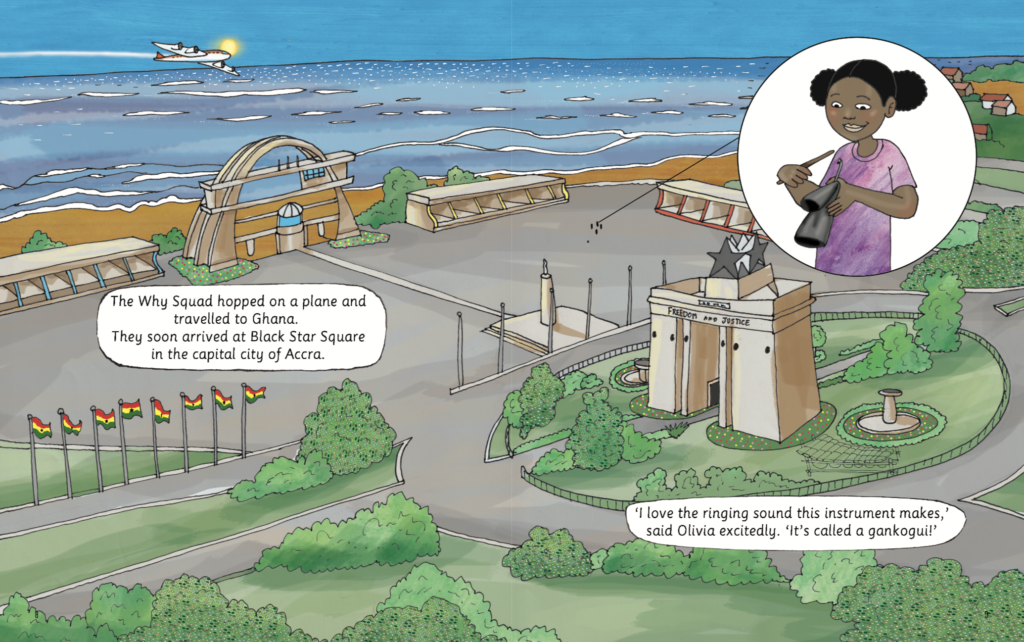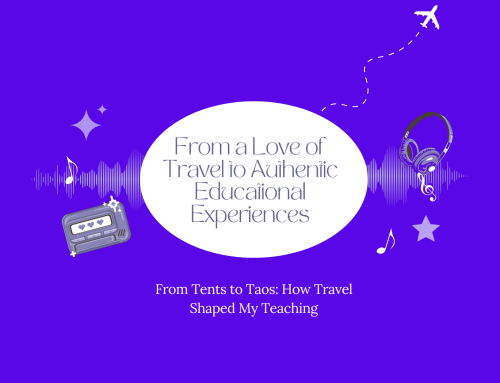If you’ve read this blog before, you know that I’m a fan of Nate Holder’s work. In 2020, I reviewed his book, Why is my piano Black and White? Since the release of that work, he has written many other books and has even adapted Where are all the Instruments? into an interactive flipbook on our site.
So, you can imagine my excitement when Nate told me he was writing another Where are all the Instruments? with a completely different focus. While the first in this series was focused on instruments from the European Classical Orchestra tradition, this book is centered on instruments and sounds of West Africa.
Introduction through Storytelling
How do you introduce musical styles and instruments to young children in a way that feels authentic and engaging?
I can remember many elementary music lessons wherein my music teacher would simply point to pictures of instruments and have us memorize their names with no context of their history, culture, or purpose. Then, we would be tested on the instrument names and move on.
While I remember very little application from those early musical experiences, I am sure that we never saw a picture of a Saasaa or learned that the Kakaki was played in Niger. Of course, this would not be the case if my music teacher had a copy of Nate holder’s new book.
The magic in Nate Holder’s work is that he weaves fun facts into engaging stories. This book is not a simple encyclopedia of instruments. No, it takes the reader on a visual journey as we follow the “Why Squad,” a beloved group of characters who are curious about all things music. The Why Squad show up in many of Nate’s books and lead us through their inquiries (like, “where are all of the black female composers?”) to better understand music and musicians.
Once the Why Squad travels around countries in West Africa, discovering a variety of new instruments, they head back to their music classroom and show their teacher what they’ve found.

Contextual Learning
Aside from the colorful illustrations and engaging characters, there are so many nuances to this simple story that make it an essential book for music classrooms. While many could be listed, these jump to the top of the list for me.
- Diverse Representation is at the heart of Nate’s work. In all of his books, he clearly illustrates a variety of races, ages, and abilities. I can imagine how any student picking up this book could see themselves in one of the characters.
- Children are Honored for the brilliance they bring to their music classroom. At the beginning of the story, the music teacher shares that she doesn’t know about many instruments other than drums in African music. She admits her lack of knowledge and then encourages the children to develop a solution. I love how, in subtle ways, this book affirms that musical discovery is a collective pursuit for a music classroom and that our students can bring experiences and knowledge to our community.
- Context is provided for what is explored and what is left out in this book. There is a glossary at the end with instruments, their pronunciations, and a map of West Africa with all of the countries represented in the book (there are also many historical landmarks mentioned throughout!). Nate makes sure to include statements such as, “Learning about musical instruments should always be done with respect to the cultures that created them.” The Why Squad goes directly to the source to learn about the music they are interested in. This is a great model for our students when considering how to explore music that interests them.
Where are all the Instruments: West Africa is an excellent introduction to the variety of sounds heard in West African music. It is also an important reminder that culture and context should always be considered when introducing music. People are at the heart of music-making, and Nate Holder’s work always puts that first.
You can get a copy of Where are all the Instruments: West Africa and accompanying posters at the Why Books shop. (Use the code FFLAT2022 to receive 10% off all resources related to the release! The offer is good until November 15th.)





Leave A Comment